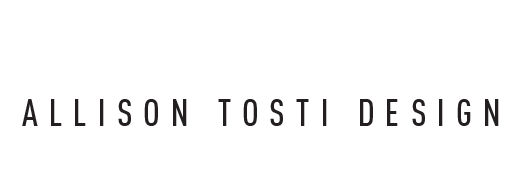29 Sep Medications for Substance Use Disorders
The good treatment plan is a comprehensive set of tools and strategies that address the client’s identifiable strengths as well as her or his problems and deficits. It presents an approach for sequencing resources and activities, and identifies benchmarks of progress to guide evaluation. In addiction recovery, it is essential to consider external support systems to increase the chances of successfully achieving and maintaining sobriety. These systems can provide valuable assistance, guidance, and accountability throughout the recovery journey. Contact SAMHSA’s regional OTP Compliance Officers to determine if an OTP is qualified to provide treatment for substance use disorders.
Medications for Substance Use Disorders
Strengths assessment often begins by determining what interests or inspires the client or by identifying those things in which the client has a sense of pride. Therapeutic community settings often identify specific roles within the treatment environment that clients can take on as their strengths and work to develop them further. Other modes of intervention perhaps need to create roles or activities for clients that use their strengths or identify opportunities outside of the program itself. Women’s programs often emphasize the strengths that enabled survival during periods of abuse or neglect. Identifying and working with strengths in the treatment planning process allows the client to be less defensive about the identified deficits and problem areas in the same plan. It is important, however, that the perception of the strengths as legitimate and of value be shared among the members of the planning team and with the client.
Why are SMART Goals Important in Addiction Recovery?

There are different types of residential programs focused on helping people including programs that work with people who have severe mental health conditions to get ready to live in their community, and programs that help people stop using drugs or alcohol. Often treatment involvement within the criminal justice system is based primarily on a conviction or plea to a drug-related offense. Although the number and type of substance-related charges is sometimes a fairly good indicator of substance abuse and related problems, the offense category alone is not a foolproof indicator of treatment need or of appropriateness of referral to a specific program. The presence of intoxicants in blood or urine at the time of arrest is a better, albeit imperfect, indicator.
Posttraumatic Stress Disorder and Depression
- Under the Confidentiality Regulation, 42 Code of Federal Regulations (CFR) 2, personally identifiable health information relating to substance use and alcohol treatment must be handled with a higher degree of confidentiality than other medical information.
- This boosts their self-esteem and encourages them to continue working towards their recovery goals.
- Acamprosate, disulfiram, and naltrexone are the most common medications used to treat alcohol use disorder.
- For example, matching offenders to treatment that is appropriate to their current stage of change is likely to enhance treatment compliance and outcomes.
- For example, build awareness, reduce stigma, and host alcohol-free and health-focused work social events.
Andrew has been allowed a number of part-time positions owing to subpar performance. His lack of focus shows in his inconsistent performance at work Top 5 Advantages of Staying in a Sober Living House and subsequent terminations. Despite his lack of a pre-existing depressive disorder, Andrew satisfies the diagnostic criteria for severe depression.
Biden-Harris Administration announces $46.8M in behavioral health funding
- Warren is a Licensed Master Social Worker, who specializes in substance abuse and mental health treatment.
- Selective serotonin reuptake inhibitors (SSRIs) for patients withdepressive disorders and buspirone for patients with anxiety disorders areexamples of psychoactive drugs with low abuse potential.
- Based on these and other factors, a specialist can work with your doctor to develop a recovery plan tailored to your needs, such as the level of care that would benefit you the most.
- Ensure your specific goal is achievable based on your circumstances, resources, and capabilities.
- Those who take part in support groups have less cause for worry, anxiety, and despair (Shaari, & Waller, 2022, p.10).
In these gatherings, Andrew may hear from others and gain insight into how they have dealt with similar situations. Those who take part in support groups have less cause for worry, anxiety, and despair (Shaari, & Waller, 2022, p.10). A common theme in the group’s communication is honesty and openness about members’ internal experiences.
Other Primary and Ancillary Services
Ongoing review of readiness for treatment can be provided through use of self-report instruments, focused discussion with the client, observation of the client within a treatment program, and review of collateral reports from treatment staff, criminal justice staff, https://wyomingdigest.com/top-5-advantages-of-staying-in-a-sober-living-house/ and family members. Several techniques for screening and assessment of readiness for change are discussed in Chapter 3. There are many approaches to treatment planning, but they possess some basic commonalities; this chapter discusses each in further detail.
Employers should consider creating a Workplace Supported Recovery (WSR) program to prevent substance use, reduce stigma, and encourage recovery. This page offers strategies that employers can use to develop a program at their workplace. Before beginning your search for a treatment center, it’s crucial to assess your specific needs and goals, as all cases of addiction are unique. Continuously monitor your progress and reassess your goals as you move forward in your recovery journey. Stay accountable to yourself and seek support from others to stay motivated and focused. Track your activities, behaviors, and milestones related to your recovery goals.
Evaluating Treatment Center Options
They track and monitor progress, ensuring recovery efforts stay on track. It’s important to remember that if medications are allowed to be kept at home, they must be locked in a safe place away from children. Methadone in its liquid form is colored and can be mistaken for a fruit juice.
Achievable goals ensure that individuals are setting themselves up for success and not overwhelming themselves with unrealistic expectations. Relevant goals focus on the specific needs and challenges of the individual, taking into account their unique circumstances. Finally, setting time-bound goals provides a sense of urgency and helps establish a timeline for achieving objectives.




Sorry, the comment form is closed at this time.